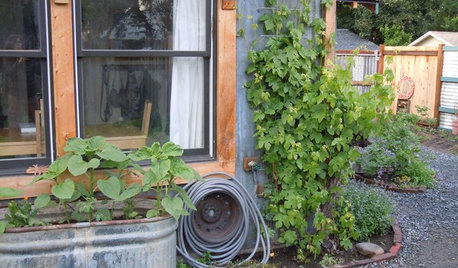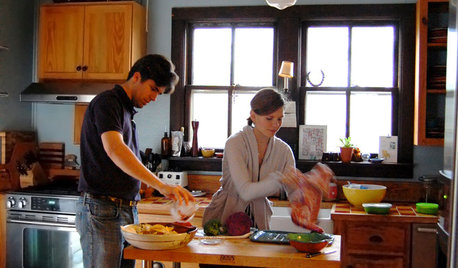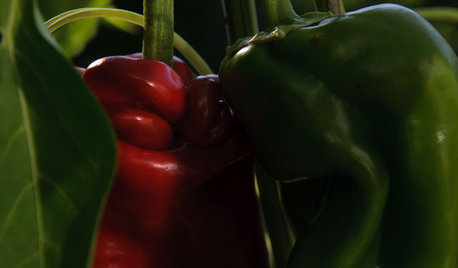Tomato and Pepper Tips
texas_weed
13 years ago
Related Stories

EDIBLE GARDENSSummer Crops: How to Grow Tomatoes
Plant tomato seedlings in spring for one of the best tastes of summer, fresh from your backyard
Full Story
COLOR10 Reasons to Make a Splash With Tomato Red
You won’t duck at these tomatoes. See how bold red shades can play up architecture, light up a dark spot and add drama
Full Story
LIFEKitchen Traditions: Tomato Season Meets a Family Legacy
Somewhere a Sicilian great-great-grandmother is smiling at a bowl of American-made sauce
Full Story
GARDENING GUIDESEssential Watering Tips for Your Edible Garden
To give your edible plants just what they need, check out these guidelines for how, when and how much to water
Full Story
FARM YOUR YARDHow to Grow Vegetables in Containers
Get glorious vegetables and fruits on your patio with a pro’s guidance — including his personal recipe for potting mix
Full Story
GARDENING GUIDESEdible Gardening Essentials: Tips for Traditional Hand Watering
Save the expense and hassle of a complicated garden system with a simple watering can or inexpensive hose add-ons
Full Story
ENTERTAINING8 Stress-Busting Tips for Hosting Small Gatherings
Make entertaining easy with these ideas for casual get-togethers
Full Story
GARDENING GUIDESSummer Crops: How to Grow Peppers
Some like 'em hot; others like them sweet. With the incredible range of peppers available for home gardens, you can have your pick
Full Story
LIFESlow Living 101: Tips for Turning Off the Chaos
It may feel as though you're too busy to slow down and enjoy life. But even little changes can have a big effect
Full Story
MOST POPULAR33 Magic Household Cleaning Tips
Houzzers from around the world share their tips for transforming housework into child’s play
Full Story


diclemeg
jollyrd
Related Discussions
Tip for burning hands from working with hot pepper
Q
My pepper and tomato seedlings have curled leaves and tip burn.
Q
pepper tomatoes taste like regular tomatoes
Q
Over winter Tomato and Pepper Indoor
Q
texas_weedOriginal Author
aloha10
texas_weedOriginal Author
thisisme
seysonn
bigdaddyj
slyguy
Bets
taz6122
taz6122
texas_weedOriginal Author
texas_weedOriginal Author
texas_weedOriginal Author
dickiefickle
seysonn
barrie2m_(6a, central PA)
prestons_garden
taz6122
robeb
tennandy
jjt2005
thisisme
happyhelper